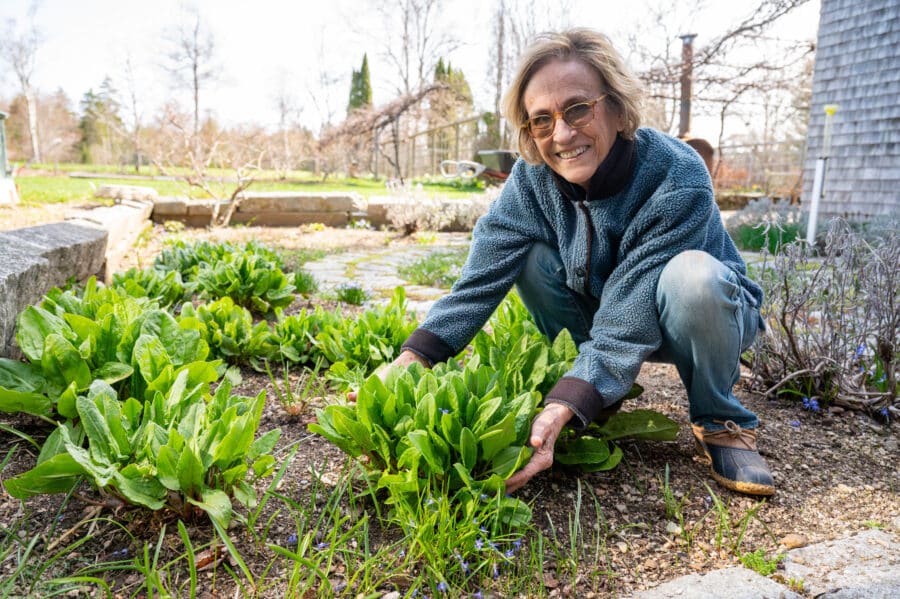Resilient, close-knit communities can be found in rural regions throughout the United States, but so too can stark health disparities exacerbated by hospital closures. Experts tout telehealth as an intervention capable of improving the availability of quality care for rural residents, but a lack of robust broadband infrastructure has hitherto kept many who live outside of urban centers from realizing the benefits high-speed Internet has to offer.
Why the Health of Rural Communities Depends on Universal Broadband
Telehealth could save lives and reduce costs for underserved rural households.


New research suggests the billions of state and federal dollars recently allocated to build fiber optic networks could make much-needed telehealth accessible to underserved rural households.
We are living in “a once-in-a-generation moment to solve the digital divide,” write Ry Marcattilio and Christopher Mitchell, authors of an April 2023 report published by the Institute for Local Self-Reliance (ILSR), a research and advocacy initiative that empowers democratic communities, and the Southern Rural Black Women’s Initiative (SRBWI), a 501(c)(3) human rights organization working to address barriers faced by women in the rural South.
Their study shows the enormous costs, human and financial, of the deteriorating healthcare systems in rural America. Drawing on research from existing programs, authors of the study found telehealth interventions alone could save more than $42 million annually on healthcare costs in 10 rural counties across Alabama, Georgia and Mississippi. Moreover, the report indicates broadband-delivered telehealth care could significantly address common health conditions affecting rural people—from diabetes to cancer to heart disease. Ultimately, the study highlights the fact that healthcare equity for rural communities requires digital equity.
In August, the Biden-Harris administration announced that nearly $700 million, on top of the $714 million announced in June, will be made available in grants and loans to connect rural residents in multiple states to high-speed internet through the U.S. Department of Agriculture’s ReConnect program. These funds for rural development are in addition to the $42.25 billion Broadband Equity, Access, and Deployment (BEAD) program, part of the administration’s “Internet for All” initiative.
That infrastructure can connect rural residents with efficient, life-affirming care.
Working with colleagues, Kay Eady, a community organizer and researcher with SRBWI based in Albany, Georgia, in Dougherty County, discovered a disproportionate number of Black women in rural Georgia were dying of cervical cancer and that those deaths coincided with a barrier to health care: lack of broadband access.
“We knew right away that broadband was something that they needed in those communities and that not having it had a direct impact on their health,” Eady says.
Making the case for telehealth
The CDC has highlighted the enduring health gap between rural and urban America, noting that rural residents tend to be older and are more likely to suffer and die from preventable conditions.
And in rural America, poverty often precludes health.
In three of the 10 counties studied by the ILSR report, more than 20 percent of residents make less than $25,000 per year and lack health insurance. In six of the other seven, between 10 and 20 percent of residents are in similar circumstances.
“We know that low-income families, families that struggle to pay their bills, and especially those that don’t have health insurance, avoid going to the doctor until it’s too late,” says Marcattilio, co-author of the report and the associate director for research with the ILSR’s Community Broadband Networks Initiative (CBNI).
In conjunction with the report, the ILSR, with SRBWI support, created an online calculator for modeling telehealth savings in relation to metrics driving the highest costs, such as preventable emergency department visits, based on key factors like population size, employment, hospitalization rates and distance from care.
As Marcattilio and Mitchell note, nationwide the average emergency visit costs more than $2,000.
All told, emergency room visits cost the 10 counties Marcattilio and Mitchell studied more than $13 million each year. Emergency department visits are the second most expensive category in the five categories of avoidable costs examined in their report, behind lost productivity. Days lost due to poor health cost these counties about $223 million a year.
But with universal broadband coverage, those counties could regain an estimated $22.3 million via telehealth interventions, benefiting individuals, businesses and entire communities, especially those forced to adapt to hospital shortages.
According to a 2023 Becker’s Hospital CFO Report, Alabama and Mississippi rank third and fourth respectively among all states in terms of the percentage of total hospitals at risk of closing. Data from the Center for Healthcare Quality and Payment Reform shows that Mississippi has 24 hospitals at risk of immediate closure, second only, in terms of total numbers, to Kansas and Texas, both facing 29 imminent closures, as of earlier this year.
Oleta Fitzgerald, regional administrator for SRBWI in Mississippi—where health care access has been described as “scary”—says even before the COVID-19 pandemic, rural areas in her region had a shortage of medical specialists, making connections between experts, family practitioners and patients a pressing issue.
“We have some of the highest rates of obesity and diabetes and respiratory illnesses in the country,” Fitzgerald says.
As she points out, residents in her state undergo an alarmingly high rate of amputations related to untreated diabetes compared to the rest of the country. Conditions like diabetes can be better managed with telehealth, research indicates.
Since the 1990s, telehealth has been a focus of diabetes treatment because of its potential to overcome geographic barriers while providing nutritional education and services like remote retinal screenings. Telehealth has been shown to lessen the severity of other illnesses as well.
A 2019 study in the American Journal of Respiratory and Critical Care Medicine demonstrated that telehealth services were associated with significantly lower 30-day hospital readmission rates when provided to patients soon after hospitalization for acute symptoms of chronic obstructive pulmonary disease (COPD). Immunocompromised individuals, such as those with cancer, can use telehealth to reduce their risk of exposure to pathogens in medical offices. Telehealth also enables faster access to mental health care, potentially reducing preventable emergency department visits. Treating mental health issues quickly and remotely might also help reduce or eliminate strain on overburdened healthcare systems, especially when it comes to treating substance use, depression and other major conditions.
Why telephone service does not suffice
While health care services provided by telephone might accomplish similar benefits as Internet-enabled telehealth, Marcattilio says many families lack consistent cell phone service to sustain calls with medical providers.
“There are plenty of stories that we heard of folks who have to drive down the road a few miles and then sit in their car in order to call the doctor,” says Marcattilio, who adds that “wireline broadband infrastructure begets better cell phone infrastructure at its core.”
Testimony from one resident in Forkland, Alabama, attests to that. “For me personally, I end up having to drive because of where I stay,” the Greene County resident told ILSR/SRBWI researchers, who provided anonymous testimonies from local sources. “So I have to drive a little bit more into town to get a better signal, but it’s pretty bad.”
High prices and data limits set by phone companies along with limited connectivity in rural areas also make mobile telephone services an inferior option compared to telehealth. Broadband-facilitated video conferencing between patients and physicians can also provide crucial visual information less available over the phone. Online telehealth offers remote monitoring capabilities too, as with devices that link up with blood pressure or heart monitors and implanted devices that transmit data back to the doctor’s office.
Those who call the rural South home envision other benefits contingent upon high-speed Internet.
“My dad is suffering from dementia,” a resident of Dougherty County told researchers. “If you could log on, to me, that would just open up a whole new world. And then my mom, who’s stuck there and limited because she wants to be there with him all the time, at least you could get on Facebook and be entertained or you could get on some type of social media, join some type of group that would provide some type of entertainment for you that would de-stress you.”
Electric co-ops help build robust broadband networks
To enjoy those better health and wellness outcomes and reduce related expenditures, residents in the rural South require robust broadband.
“In many areas, that means we’ll need to build it,” Marcattilio and Mitchell write.
Already, electric cooperatives are building and operating fiber optic infrastructure in rural regions across the United States. Conexon, a Kansas City-based company formed in 2015, has assisted more than 200 electric cooperatives, 50 of which deploy fiber networks, the go-to technology for high-speed internet service. Partnering with electric co-ops like Southern Rivers Energy in Georgia and Sac Osage in Missouri, Conexon has helped connect some 150,000 subscribers.
Jonathan Chambers, a Conexon partner and executive team member who previously worked as Chief of the Office of Strategic Planning for the FCC, says the company collaborates with rural electric co-ops in part because they have served geographic regions that historically lacked electricity service. Those same rural regions now tend to be unserved or underserved by broadband, which becomes all too apparent when the service is needed most, as was the case at the peak of the COVID-19 pandemic.
“Below, oftentimes, about 20 homes per mile, the network economics has meant that most companies can’t make profit building large scale infrastructure in those areas, and therefore don’t invest in those areas,” Chambers says. “The way as a nation we’ve built all kinds of infrastructure in rural areas—whether it’s rural airports, or roads, or rural electric networks—has been a combination of some government programs, at times, and in the case of electricity really, quite uniquely, not just in the United States, but anywhere in the world, the development of community-based, that is, homegrown organizations, cooperatives, formed by the people who lived in those communities. So, they are member organizations who built and maintained electric networks across rural America, starting in the late 1930s and continuing to this day.”
Conexon’s approach has been to build a fiber network alongside existing electrical infrastructure. Because Conexon developed techniques specific to building on electric co-op infrastructure, the company is able “to build in a much more efficient, less expensive way than most of the companies that build fiber optic networks,” Chambers says. With that approach, Conexon and co-op partners have been able to do far more for people in rural places than cable and big telecom companies have proven able, or willing, to do.
Sean Gonsalves, associate director for communications with the ILSRs CBNI, says electric co-ops are well-positioned to build fiber optic networks because in most cases they own the poles and they have bucket trucks, so in a sense, they just have to put fiber cables over their existing systems.
Still, he says it’s crucial to continue to advocate to ensure infrastructure reaches everyone in a service area. “We’ve heard anecdotally from folks on the ground that there are some electrical cooperatives that tend to sort of either build around Black homes, or leave them kind of last,” Gonsalves says. “It’s important that as these electric cooperatives are receiving these federal funding that their feet are held to the fire as well.”
A critical juncture for ensuring universal broadband access
The federal government is allocating billions of dollars to co-ops and municipalities to provide unserved communities with high-speed Internet and, as the ILSR report puts it, to thereby “revolutionize not only how we deliver health care services across the United States, but how we think about them as well.”
Georgia has emerged as a pioneer in mapping broadband access, allocating in excess of $500 million to extend high-speed Internet availability across the state. Other states and communities have an opportunity to follow suit or perhaps surpass that.
Although it would cost an estimated $95 million to build fiber optic networks in the communities included in the ILSR study, most of the areas qualify for federal funds distributed by states to help cover the cost. Such an investment would drastically alter the health care landscape in those rural regions.
While some $42 million could be recovered through telehealth interventions in those 10 counties in the rural South, the federal BEAD program makes more than $42 billionavailable for expanding high-speed Internet access.
Alabama has secured $1.4 billion, and Georgia $1.3 billion, to provide Internet service, courtesy of the BEAD program. Fitzgerald and Gonsalves say Mississippi ought to receive $1.2 billion from the program.
Since 1938, the Delta Electric Power Association (DEPA) has provided electric power to families, farms, businesses and industries throughout a number of counties in Mississippi. DEPA has already started building out broadband infrastructure, Gonsalves says, using about $5 million obtained through the CARES Act and more than $46 million in Rural Digital Opportunity Fund (RDOF) money.
The Biden administration also established the $3 billion Tribal Broadband Connectivity Program, which could help bring high-speed internet and telehealth to Tribal lands.
Although electric co-ops tend to offer more affordable and stable prices for their members, too many households still can’t afford Internet services. Aiding affordability a bit, the FCC’s Affordable Connectivity Program makes a $30 monthly subsidy available to qualifying households—$75 per month for eligible households in Tribal territories—along with a $100 discount to purchase a laptop, desktop or tablet. Between one-half and three-quarters of residents in every county included in the ILSR study would qualify, per the report.
To take advantage of the critical juncture and ensure access, organizers in those counties underscore the need for both ongoing advocacy and education, which can involve reaching out to and collaborating with organizations, like the ILSR, as the SRBWI did.
“They got to understand what is out there,” Fitzgerald says with respect to residents in those rural regions. “They got to understand what this is. They got to understand that what they’re paying an arm and a leg for is not good service, and they’ve got to understand the opportunity that’s here.”
James Anderson is from Illinois but now resides in Riverside, California. He has taught college courses as an adjunct professor and his work has appeared in a number of outlets. He's a member of the IWW Freelance Journalists Union. You can read more of his work at waywards.substack.com.
Have thoughts or reactions to this or any other piece that you’d like to share? Send us a note with the Letter to the Editor form.
Want to republish this story? Check out our guide.
More from Barn Raiser

Barbara Damrosch’s Life in the Garden







